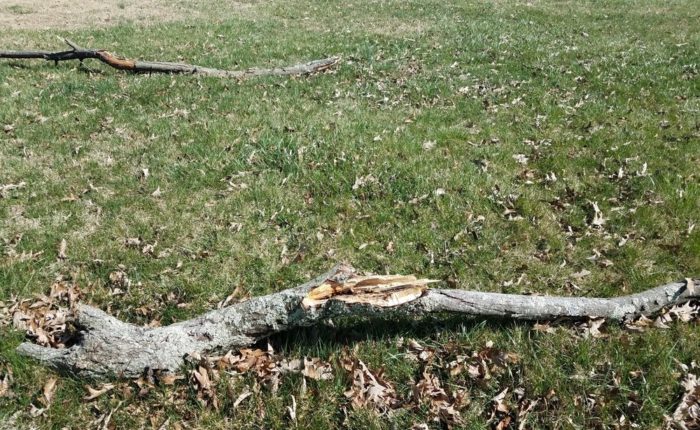Sudden Branch Drop Syndrome: What You Need to Know
March 2, 2021

You’re relaxing outdoors on a hot summer day. Suddenly, with no warning, there’s a loud cracking noise, and a branch from your seemingly healthy tree hits the ground. Startled, you wonder what happened. Is your tree diseased? Will it happen again? Might someone be hurt? Your tree could have sudden branch drop syndrome. Here’s what you need to know.
What Is Sudden Branch Drop Syndrome?
This syndrome is known by several names — sudden branch syndrome, summer branch drop, summer branch failure, and sudden branch drop syndrome. Essentially, it’s just what it sounds like. One or more branches unexpectedly break off of a tree and fall to the ground. It typically occurs during warm weather, day or night.
What Causes Sudden Branch Drop Syndrome?
Unfortunately, a definitive cause for this syndrome is not known, but experts have various theories about why it happens, and they’ve identified some potential contributing factors.
- Branch position
- Tissue shrinkage and internal cracks
- Bacterial wetwood or other internal tree problems
- High humidity causing excess moisture and a weakened tree structure
- Amateur pruning errors that create an uneven branch load
- Changes within the limbs due to heat and dryness
Can I Prevent Sudden Branch Drop?
Since there’s no actual known cause, prevention is unlikely. However, there are actions you can take to reduce the likelihood of sudden branch drop.
Tree pruning is an important maintenance task. While it’s not likely to prevent your tree from developing summer branch failure, it minimizes risk of injury from unexpected falling limbs.
Regular tree inspections can also lessen potential dangers and support good tree health. Follow recommendations for tree care and nutrition. Watering, fertilizing, mulching, and trimming should be performed as required for your tree species.
Which Trees are Common Victims of Summer Branch Drop?
Sudden branch syndrome happens with all types of trees. But it occurs more commonly with the following species:
- Oak
- Elm
- Sycamore
- Eucalyptus
- Beech
Aging trees are affected more often than young trees, and long, horizontal limbs are the most likely to drop.
What Should I Do If My Tree Has Sudden Limb Failure?
Once the first branch falls, the possibility of more dropping increases. Therefore, exercise caution around your tree after this happens to prevent property damage and injury. Call a tree expert to inspect the tree to rule out disease and other issues. Routine inspections for a few years thereafter are a good idea, too. Be sure to have the branch removed to prevent trip and fall accidents. Finally, have any necessary follow-up pruning done for accident prevention and safety.
Give us a call if you experience sudden branch drop syndrome in Southeastern PA or if you experience any other issues for which you might need tree pruning services. Our team is well-versed in tree care and you can feel confident that your tree pruning will be done the right way.
